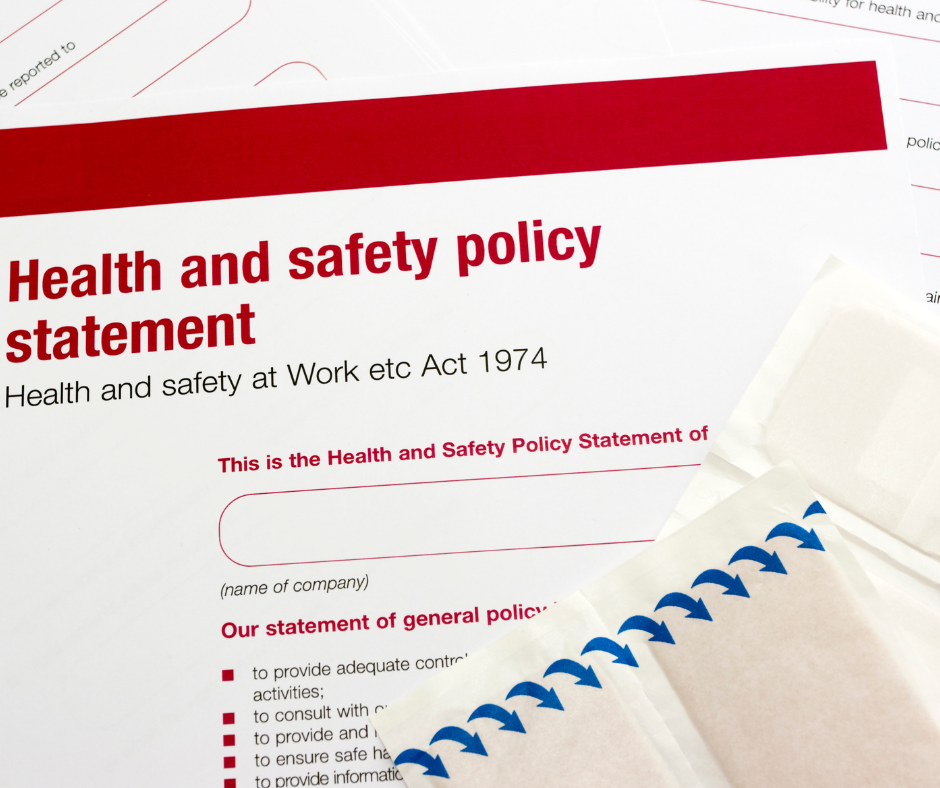
Are you ready to create a thriving organization with clear expectations and a well-defined company culture? Crafting effective policy statements plays a vital role in achieving success by providing guidance and ensuring compliance. In this blog post, we’ll delve into the importance of policy statements, their key components, and how you can craft your own examples of policy statements to empower employees and maintain a professional environment in adherence to legal requirements.
Key Takeaways
- Understand and develop policy statements to create effective guidelines for employees.
- Key components include clarity, conciseness, realism, achievability & active voice.
- Involve internal stakeholders in the process of crafting policies that are compliant with legal requirements and regularly update them for relevance.
Understanding and Developing Policy Statements
Policy statements serve as the backbone of an organization, providing guidance on acceptable behaviors for company employees and ensuring compliance with legal rules and regulations. These written statements go beyond mere rules, forming a primary policy document that sets expectations and standards for employees, which are often included in an employee handbook. By having a well-defined policy statement, companies can avoid potential disciplinary action and maintain a healthy work environment.
Grasping the distinction between policies and procedures paves the way for creating effective policy statements. Policies outline the rationale and course of action, while procedures furnish explicit directions on how to accomplish desired results. Knowing this distinction helps organizations create a comprehensive set of guidelines that not only set expectations but also provide employees with the necessary tools and resources to achieve organizational goals.

How to Write a Policy
When tackling the task of creating a policy, understanding the essential steps of “how to write a policy” is crucial. Begin by clearly defining the purpose and scope of the policy, ensuring that its objectives align with organizational goals. Conduct thorough research to gather relevant information and insights that will inform the policy’s content. Structure the document logically, using concise language and providing clear guidelines for implementation. Seek input from key stakeholders to ensure inclusivity and garner diverse perspectives. Regularly review and update the policy as needed to adapt to changing circumstances, maintaining its effectiveness over time. Following these steps will help you craft a well-formulated and impactful policy for your organization.
Key Components of Policy Statements
Creating an impactful policy statement requires attention to essential aspects like:
- Clarity
- Conciseness
- Realism
- Achievability
Policies should be written in active voice and easily comprehensible, ensuring that equal opportunity practices are clearly communicated. Specificity is key to avoid ambiguity and provide clear guidelines, enabling more precise evaluation and assessment, thereby improving the efficacy of the policy statement.
By emphasizing particular topics and providing direction without being overly directive, organizations can create policy statements that foster a positive work environment and encourage employees to comply with the established guidelines. This, in turn, promotes a culture of responsibility, accountability, and professionalism within the organization.
Differentiating Between Policies and Procedures
As mentioned earlier, policies delineate the rationale and course of action, while procedures furnish explicit directions on how to accomplish desired results. Policies are connected to the overall strategy of an organization by supplying guidelines and frameworks for decision-making and implementation. Examples of business procedures include:
- Onboarding
- Sales process
- Content marketing
- Project management
Understanding the distinction between policies and procedures allows organizations to create a comprehensive set of guidelines that cover all aspects of employee behavior and organizational processes. Moreover, it helps ensure that employees have the necessary resources and tools at their disposal to achieve the desired outcomes, further contributing to the success and growth of the organization.
Examples of Common Policy Statements

In most organizations, common policy statements include:
- Attendance and punctuality
- Equal opportunity and diversity
- Workplace health and safety
- Information security policies
These policies cover various aspects of employee behavior and organizational processes, ensuring that the workplace remains a fair, safe, and productive environment, in line with the employee code and human resources guidelines.
Understanding and executing these common policies enables organizations to establish a robust foundation for success while staying compliant with applicable laws and regulations.
Attendance and Punctuality Policy
Maintaining a productive work environment and ensuring consistent attendance from all employees necessitates an effective attendance and punctuality policy. This policy outlines the expectations for employee timeliness and the consequences for excessive tardiness or absences. Job abandonment, for example, is when an employee is absent from work without notifying a supervisor for three or more consecutive days, resulting in termination without notice.
Implementing a clear attendance and punctuality policy helps organizations maintain a professional environment and ensures that employees are aware of the consequences of not adhering to the established guidelines. This ultimately contributes to the overall efficiency and success of the organization.
Equal Opportunity and Diversity Policy
Promoting a fair and inclusive workplace demands an effective equal opportunity and diversity policy. This policy advocates for equitable treatment, forbids any type of discrimination, and encourages inclusivity in the workplace. By implementing such a policy, organizations create a work environment free from discrimination and provide equal access to opportunities, fostering a diverse and inclusive workplace where everyone has an equal chance of success.
The essential elements of a successful equal opportunity and diversity policy, overseen by an equal opportunity officer, include:
- A definite declaration of commitment
- Non-discrimination
- Inclusion and diversity
- Equal access and opportunity
- Prevention of harassment
- Adherence to laws and regulations
Creating an inclusive and effective policy allows organizations to guarantee equitable treatment for all employees while adhering to relevant laws and regulations.
Workplace Health and Safety Policy
A workplace health and safety policy is a written document that outlines an organization’s dedication to providing a secure and healthy work environment for its personnel. This policy emphasizes the employer’s responsibility to ensure a safe and healthy work environment for all employees and the employer’s responsibility for guaranteeing the safety of every company employee and client in the workspace.
Management plays a critical role in preventing workplace incidents by implementing and maintaining safety program initiatives. By crafting a comprehensive workplace safety policy, which includes workplace health and safety measures, organizations can create a safe and positive work environment while remaining compliant with relevant laws and regulations.
Information Security and Data Protection Policy
The information security and data protection policy includes the following measures:
- Safeguarding sensitive information
- Managing risks associated with data breaches
- Protecting the confidential data of personnel and patrons
- Protecting the company’s intellectual property
The Chief Information Security Officer (CISO) is responsible for executing and sustaining data security protocols and responding to policy infringements.
A well-defined information security and data protection policy enables organizations to:
- Actively mitigate risks associated with data breaches
- Safeguard the confidentiality and integrity of sensitive information
- Maintain compliance with relevant laws and regulations
- Contribute to the organization’s overall reputation and success.
Policy Template Word
In search of an effective way to streamline your policy creation process? Look no further than a meticulously crafted “policy template Word.” This invaluable tool is tailored to simplify the daunting task of drafting policies, ensuring a seamless and professional document. With the “policy template Word,” you can effortlessly customize and adapt policies to your specific needs, saving both time and effort. The user-friendly interface of Microsoft Word enhances accessibility, allowing you to navigate through the document effortlessly. Take advantage of this resource to establish comprehensive and well-structured policies for your organization, utilizing the convenience and versatility that the “policy template Word” provides.
Crafting Your Own Policy Statements

The process of crafting effective policy statements incorporates the following elements:
- Research
- Legal consultation
- Employee involvement
- Use of clear language and formatting
By following these steps, organizations can craft policy statements that not only adhere to legal requirements but also contribute to a positive and professional work environment.
The forthcoming sections will explore each of these aspects in depth, offering guidance on creating your own policy statements and providing policy statement examples.
Conducting Research and Consulting Legal Advice

Researching legal requirements and seeking advice from legal professionals specializing in compliance is paramount in the process of crafting policy statements. This helps ensure that your policies conform to the latest legal requirements, and it also helps avoid potential legal issues that may arise due to non-compliance. Examples of statutes that may affect company policy formulation include federal laws regarding drug-free workplace policies, workers’ compensation laws, and employment discrimination laws.
Staying updated on legal changes that can influence your policies involves vigilant monitoring of law and regulation alterations, along with regular consultations with trustworthy legal advisors. By taking these measures, organizations can create policy statements that remain compliant with changing laws and regulations, ensuring a solid foundation for success and growth.
Involving Employees in the Process
Employee involvement in policy formulation can foster increased engagement, a morale boost, and a vibrant culture of participation and enthusiasm. By involving employees in setting performance targets and goals, organizations can also ensure that the policies are relevant and effective in achieving the desired outcomes. Employees can be effectively involved in the policy-making process through strategies such as collaborating with internal stakeholders, empowering employees to make decisions, transparent communication, and seeking employee input.
Addressing the difficulties associated with involving employees in policy formulation can be done by:
- Introducing clear communication and honest interactions to foster trust between employees and managers
- Conducting employee surveys
- Employing suggestion boxes
- Involving employees in setting performance targets and goals
These actions can help address these difficulties and contribute to a more inclusive and effective policy-making process.
Utilizing Clear Language and Formatting
Clear language and formatting make policy statements more understandable and straightforward to follow. By using simple language and concise sentences, organizations can ensure that their policies are professional, organized, and easily accessible to all employees. Consistent formatting throughout the document gives it a professional appearance and assists readers in locating specific information more expeditiously.
Maintaining clarity and conciseness along with a consistent format is vital during policy statement creation. This not only makes the policies easier to understand and follow but also contributes to a more professional and organized work environment.
Ultimately, clear language and formatting play a crucial role in ensuring the success and effectiveness of your policy statements.
Implementing and Reviewing Policy Statements

After formulating your policy statements, the subsequent stage involves their effective implementation and review. This involves clear communication, dissemination, and periodic assessment and revisions.
By following these steps, organizations can ensure that their policies remain relevant, compliant, and effective in guiding employee behavior and maintaining a professional work environment.
Communicating and Distributing Policies
Policy dissemination to employees necessitates a multi-pronged approach. These can include distributing printed documents, sending emails, or conducting all-staff communication. By utilizing various channels to inform employees of new or updated policies, organizations can ensure that their workforce remains informed and aware of the expectations set forth in the policy statements.
Policies should be published in a centralized system, such as an internal wiki, a company’s intranet, or the Scribe dashboard, to ensure that they are readily available to all individuals at any point in time. This not only helps maintain compliance with relevant laws and regulations but also contributes to a more organized and efficient work environment.
Regularly Evaluating and Updating Policies
Regular evaluation and revision of policies are imperative for ensuring their relevance and alignment with changing laws and regulations. Key indicators that a policy statement might need updating include:
- Changes in legislation or regulations
- Shifts in organizational goals or priorities
- Emerging industry best practices
- The need to align with new technologies or advancements
By regularly evaluating and updating policies, organizations can ensure that they remain relevant, effective, and compliant with changing laws and regulations.
Several tools and software can be of assistance when it comes to regularly reviewing and updating business policies. Popular options include:
- PowerDMS
- PolicyTech
- Sharepoint
- PolicyHub
- SweetProcess
By utilizing these tools, organizations can streamline the process of updating and maintaining policies, ensuring that they remain current and compliant with the ever-changing landscape of laws and regulations.
Policy Numbering Best Practices
When considering policy numbering best practices, it’s crucial to establish a systematic and efficient approach to assigning unique identifiers to policies within an organization. Implementing clear and consistent policy numbering best practices helps streamline communication, enhance document retrieval processes, and ensure compliance. Organizations often find that adopting a standardized format for policy numbering not only facilitates internal operations but also contributes to transparency and accountability. By adhering to policy numbering best practices, companies can simplify audits, improve document tracking, and create a structured foundation for effective policy management. Whether through alphanumeric codes or other conventions, the careful implementation of policy numbering best practices is an integral aspect of robust governance and compliance frameworks
Summary
In conclusion, crafting effective policy statements is a vital aspect of creating a successful organization that maintains both a professional work environment and compliance with legal requirements. By understanding the key components of policy statements, differentiating between policies and procedures, and implementing common policies, organizations can lay the foundation for success. Moreover, involving employees in the policy-making process, utilizing clear language and formatting, and regularly evaluating and updating policies contribute to the overall effectiveness and relevance of these statements. With these steps in mind, you’re now equipped to craft your own policy statements and propel your organization to new heights of success and growth.
Frequently Asked Questions
What are the 5 common policy statements?
The five most common policy statements found in business environments are related to human resources, financial, legal or regulatory, safety, and operational matters.
How do you write a policy statement?
A policy statement should be written in plain language and should be kept simple, general, relevant, and compliant. It should focus on a specific issue and clearly state the organization’s position while providing guidance without being too long or prescriptive.
What is a general policy statement?
A general policy statement is a formal document outlining how an agency intends to exercise its discretionary authority and provide guidance to the public. It does not have the force of law.
Which is the best example of a policy?
The best example of a policy is the housing policy which describes how the government provides adequate housing to citizens and tackles discriminative practices.
What is the purpose of a policy statement?
A policy statement outlines the acceptable behaviors for company employees and ensures compliance with applicable legal requirements.